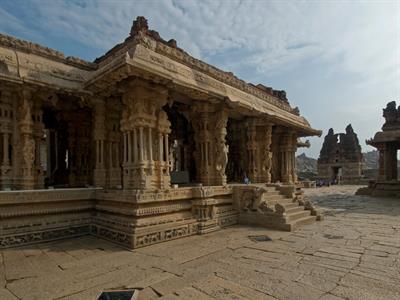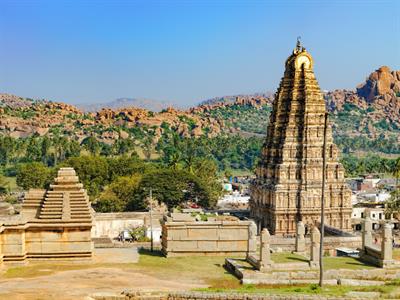PDF chapter test TRY NOW
Rise of Tuluva Dynasty:
The rule of Krishna Devaraya
- Krishna Devaraya ascended the Tuluva dynasty in the year \(1509\ AD\ \)and ruled for 20 years.
- He took over the reign when the political condition was highly unstable, managing the threats he established a dynamic dynasty that powered the empire to greater heights.
- He had encountered many problems which were plaguing his administration some of them are given below:
1. Keep a check on the rival chieftains of the Tungabhadra region.
2. Disputes with the Gajapati’s of Odisha, and Muslim rulers of the North.
3. Problems with the rulers of Gulbarga. - Later Krishna Devaraya defeated the kingdom of Gajapathi which was under Prataparudra and extended his dominance over the Odisha region.
BATTLE OF DIWANI: Krishna Devaraya took on Mahmud Shah, the sultan of Deccan, who was later defeated and imprisoned by Devaraya.
- Krishna Devaraya entered into a matrimonial alliance with Prataparudra and returned the confiscated areas to the Odisha ruler.
The Portuguese connect
- Krishna Devaraya maintained a cordial relationship with Portuguese powers during his reign who helped with armed supports during his battles. Devaraya in return helped Portugal powers to take control of Goa in \(1510\).
- The Portuguese supplied Devaraya with modern artillery, horses that were brought from Iran. These imports from Arabian countries helped for the development of the Vijayanagar army.
- He also had trade relationships with foreign powers like the Portuguese which increased the economic position of the dynasty.
Cultural development under Devaraya:
- The Period of Devaraya witnessed numerous construction activities for the development of the empire. He had built many Irrigation tanks, forts and also had restored many reservoirs to help agriculture to flourish.
- “Vallabapuram” was the name of the reservoir that he built across the river Tungabhadra, he had also built a channel named Basavanna.

Vithal temple in Hampi
- He was known for his work on restoring the temples of South India with the wealth that he had acquired during wars and conquests.
VYASATHIRTHA: He was one of the greatest saints of the Bhakti movement who visited the court of Devaraya. He was later credited as the “Raja guru of Krishna Devaraya”.
Temple Construction under his rule

Rajagopuram in Hampi
- He also built Rajagopurams which was called “Rayagopurams” to honour the ruler Krishna Devaraya.
NAGALAPURAM: Krishna Devaraya built a new city named Nagalapuram in the memory of his wife “Nagaladevi” during his tenure.
Art and Architecture:
- Devaraya was a great patron of arts and literature who wrote a Telugu work named Amuktamalyada” and “Jambavati Kalynam” which is a Sanskrit play. His interests and contribute to the arts earned him the sobriquet “Andhra Bhoja”.
ALASAANI PEDDANA: He was considered the greatest Telugu poet for his contribution to Telugu literature. He also carried the nickname “Andhra Kavi Pithamaha”.
- He extended his patronage to the finest scholars of his period, where he had his court adorned with “Eight eminent scholars or the Ashtadiggajas”, which included great poets like Alasaani Peddana, Tenali Rama and Nandi Thimmanna.
Reference:
Vithal temple in Hampi - Satish Parashar / Shutterstock.com
